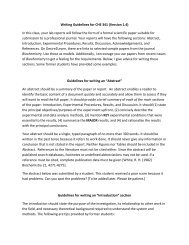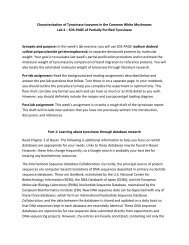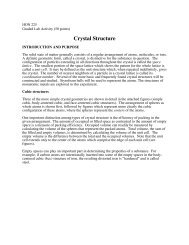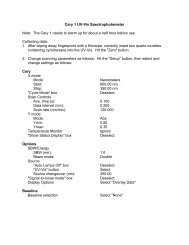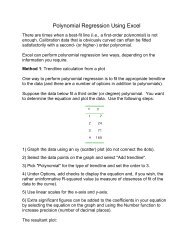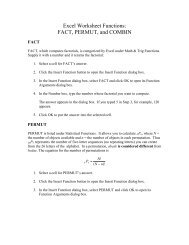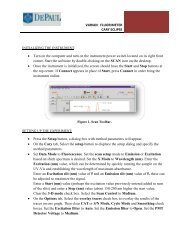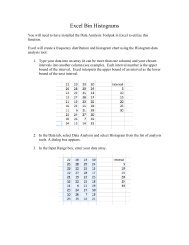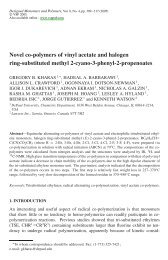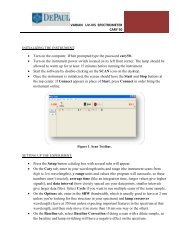Bomem-GRAMS User's Guide
Bomem-GRAMS User's Guide
Bomem-GRAMS User's Guide
You also want an ePaper? Increase the reach of your titles
YUMPU automatically turns print PDFs into web optimized ePapers that Google loves.
Appendix D<br />
Glossary<br />
The transmittance T is the ratio of the intensity I of the light which passes<br />
through the sample to the intensity I 0 of the light striking the sample.<br />
transmittance spectrum<br />
I<br />
T = % T = 100T<br />
I<br />
0<br />
The percent transmittance of a sample as a function of the frequency or<br />
wavelength over a given spectral range.<br />
The transmittance spectrum is calculated point-by-point from the sample<br />
and reference spectra as follows:<br />
sample<br />
%Transmitt ance = ×100<br />
reference<br />
validation<br />
Tests used to establish that an analyzer is operating correctly (instrument<br />
validation) and is providing results within the expected degree of agreement<br />
(calibration validation). Validation can include diagnostics on the reference<br />
and sample spectra and predictions with known samples.<br />
validation set<br />
In spectrometer calibration, a set of standard samples similar to a training<br />
set but used to validate a calibration model.<br />
wavelength<br />
The distance (λ) between successive points of equal phase in a wave.<br />
In FT-IR spectrometry, wavelength is usually expressed in micrometers<br />
(µm) or nanometers (nm).<br />
wavenumber<br />
The number (σ) of cycles of a wave in unit length. The wavenumber is<br />
the reciprocal of the wavelength:<br />
σ = 1 λ<br />
The unit of the wavenumber is 1<br />
cm or cm-1 .<br />
<strong>Bomem</strong>-<strong>GRAMS</strong> <strong>User's</strong> <strong>Guide</strong> 57



